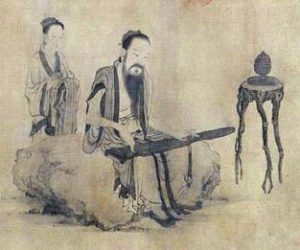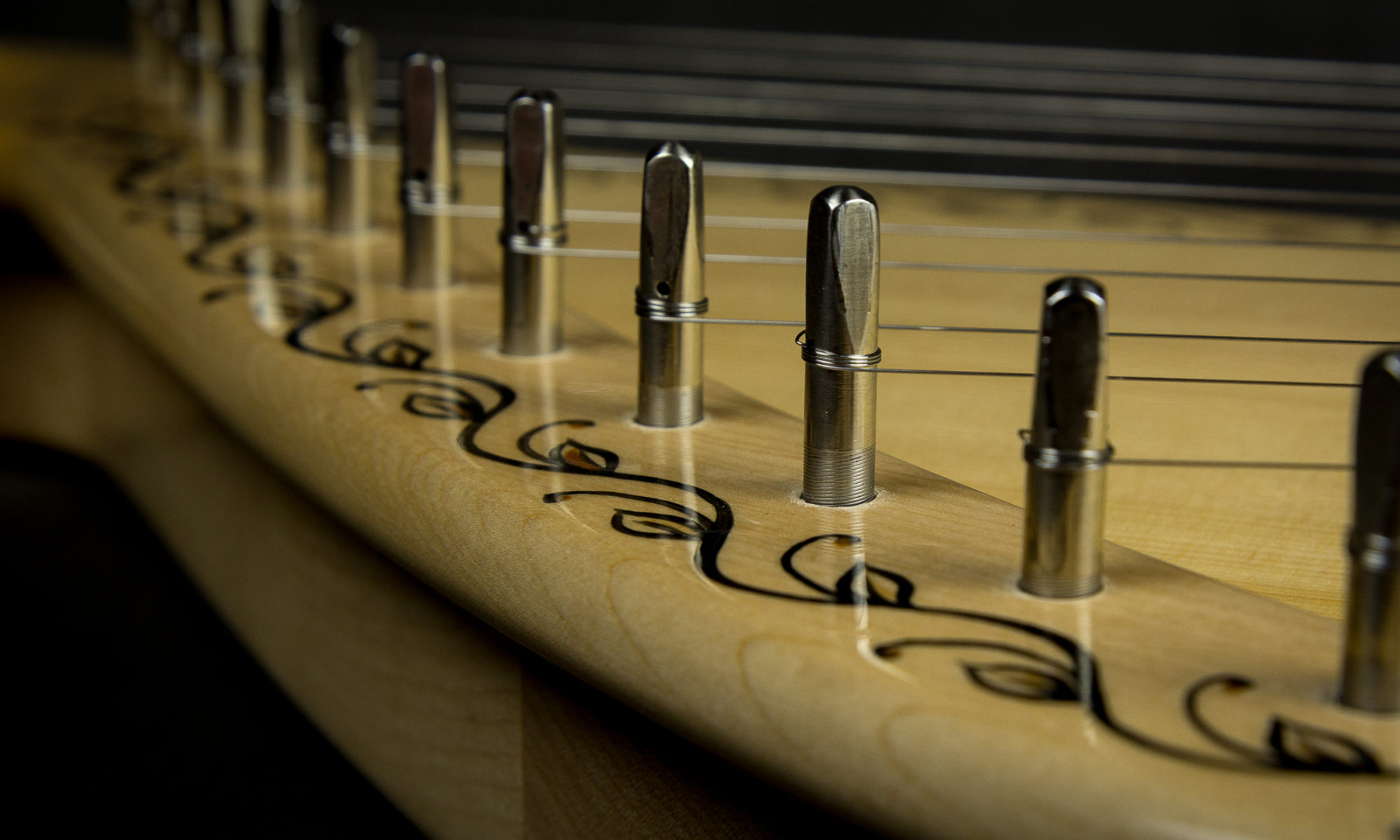
In ancient China, all scholars and gentlemen were expected to be well versed in four arts, namely, qin, qi, shu, hua, or the string music instrument, chess (go), calligraphy and painting.
Here, qin refers specifically to guqin, a seven-string Chinese zither. With a history of more than 5,000 years, guqin has long been regarded as the crown of all music instruments in the country and the symbol of Chinese high culture.
Legend has it that guqin first came into being as a long single-string zither created by Fuxi, one of the primogenitors of the Chinese civilization, who taught people means to survive and later originated “I Ching,” or “The Book of Changes.”
In the hands of Emperor Shun (2294-2184 BC), one of the Three Sovereigns and Five Emperors in ancient China, the qin began to have five strings to represent the five basic elements of the universe, namely, metal, wood, water, fire and earth.
Then, King Wen (1152-1056 BC), the first ruler of the Zhou Dynasty (1046-256 BC), added a sixth string to the qin to mourn his son after he died. Therefore, people often find the sound of the sixth string of guqin sorrowful.
Again, King Wu (1087-1043 BC), the next ruler of the Zhou Dynasty, added the seventh string to inspire his soldiers as his country was going to war with the Shang Dynasty (1600-1046 BC). Therefore, this string often produces a masculinely resonant sound, representing bravery and courage.
Later, guqin became standardized as the one we see today and the instrument is full of symbolism of Chinese culture and philosophy.
For instance, the length of the body of guqin measures 3 chi 6.5 cun (old Chinese feet and inches, about 120-125 centimeters), to symbolize the 365 days of the year. Also, there are 13 inlaid dots of ivory, jade or mother-of-pearl on the outer edge of guqin, which indicate the pitch positions and represent the 13 months in an intercalary lunar year.
Meanwhile, the slightly convex upper surface of the sound board, made of paulownia wood, is rounded, representing the sky and the bottom base, usually made of Chinese catalpa, is flat, symbolizing the earth. This is because ancient Chinese believed that the sky was round and the earth flat.
Therefore, the performance of guqin signifies the union of heaven, earth and man.
By plucking and touching the seven strings of the instrument, players can generate a range of four octaves.
The three basic playing techniques are called sanyin (open string, representing earth), fanyin (harmonics, representing heaven) and anyin (stopped string, representing humans).
The sound of guqin is quite unique, deep, remote, lingering, ethereal and especially “quiet,” which means that the instrument is designed to be performed in intimate settings. Guqin playing has long been developed as an elite art form and also an essential part of education for noblemen and scholars. It’s also called the “instrument of the sages.” For example, Confucius (551-479 BC), one of the most influential philosophers in the world, was himself a great master of this instrument.
But the best-known player of guqin in its 5,000 years of history is none other than Yu Boya, a legendary virtuoso of the instrument. Yu lived during the Spring and Autumn Period (770-476 BC). When he was young, Yu loved playing guqin and later became a student of Cheng Lian, the best guqin player of the time.
Under Cheng’s tutoring, Yu made remarkable progress and after three years of practice he had almost mastered the instrument.
However, Yu felt that he still wasn’t a real guqin virtuoso and could not use it to freely express his feelings.
One day, Cheng told his student: “I have taught you whatever I know, but I can see that you aren’t satisfied. So, I’ll recommend you to another teacher who can bring you to the perfection of guqin performance.”
Next morning, Cheng took Yu to the top of a high mountain cliff bordering on the sea in the east. Cheng told Yu: “You wait here and your new instructor will arrive in a few minutes.” Then Cheng walked away, leaving Yu alone on the top of the mountain.
Yu waited and waited, but no one showed up. Then, gradually, he became enthralled by the beautiful melodies created by the sound of the sea waves crashing on the rocks below and the song of the birds and susurrus of the nearby trees.
When the sun began to set, it suddenly dawned upon Yu that the new instructor recommended by his teacher was none other than nature herself. Yu realized that only by learning from nature could he master the real virtuosity of the instrument. So, he found an inexhaustible source of inspiration and energy. Yu finally reached the level of perfection he was seeking for and became the best guqin player of his time. But because of the profundity of his musical works, Yu found few people could really understand them. Only his bosom friend, Zhong Ziqi, could actually appreciate his talents.
When Yu was playing a new tune one day, Zhong became very excited. He said: “It’s wonderful, I can see lofty Mount Tai in front of me.” Then Yu played another tune and Zhong clapped his hands, saying: “Bravo! It’s just as melodious as the flowing water.”
Since then, people have been using the phrase “high mountain and flowing water” to describe a bosom friend like Zhong Ziqi or wonderful music such as the works created by Yu Boya.
Later, when his friend Zhong died, Yu wept his heart out. He cried: “Now that my friend Zhong is gone, why should I play guqin anymore?” So, he smashed his beloved instrument and never touched another guqin for the rest of his life.

